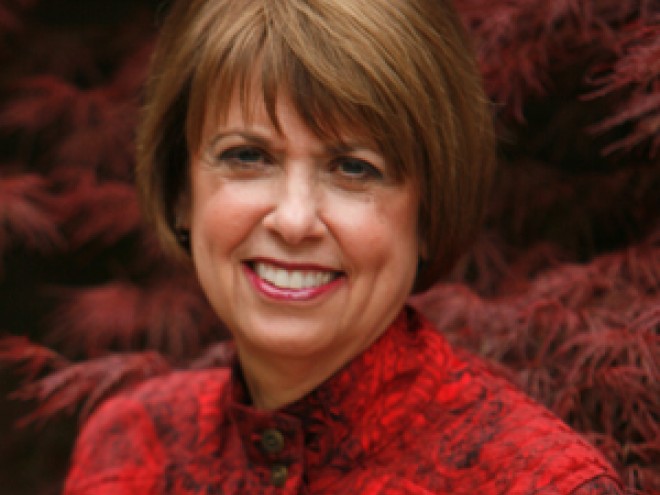 Doreen Rappaport, author of numerous highly acclaimed books for children and young adults, spoke on Holocaust Remembrance Day at the Great Neck Library, a public library in suburban New York. Her most recent book Beyond Courage: The Untold Story of Jewish Resistance During the Holocaust is a comprehensively compiled and beautifully told recounting of numerous instances of Jewish resistance, of fighting back in ways large and small, of unbowing strength in the face of the Nazi onslaught, something so many are sadly unaware is also an important part of the Holocaust story. Of course, the huge, senseless, incalculable tragedy can never be denied and should never be forgotten. We have, fortunately, an ever-growing body of literature, reflected in the Jewish Book Council’s reviews, testifying and bearing witness to cruelty and slaughter and the martyrdom which ensued. But Rappaport reminds adults, and more importantly their children, that there was another aspect to the Jewish experience of the time which we should remember with pride and glory and from which we can draw lessons important to our future survival and health as a people, that of showing resistance in any way possible and of showing, too, a kind of courage difficult to imagine in our day. She is convinced that today’s children need to hear the stories of pushing back and be inspired by them. Coupling survivor testimonies with stories of courage and resistance is an effective and telling way to teach young people about the way it was. She focuses on several types of resistance in her book and in her talk, some more dramatic than others, but all significant and vitally important including escapes, uprisings (in addition to the well-known one in the Warsaw ghetto), sabotage, gestures within the camps such as the lighting of Chanukah candles, and the saving of children. This last, the saving of children, was vitally important to older Jews who knew that they would probably not survive. The push to smuggle, hide and otherwise save children seemed like the only hope for any possible future and was treated with the utmost seriousness. Rappaport spends much time writing and talking about this crucial and highly emotional topic.
Doreen Rappaport, author of numerous highly acclaimed books for children and young adults, spoke on Holocaust Remembrance Day at the Great Neck Library, a public library in suburban New York. Her most recent book Beyond Courage: The Untold Story of Jewish Resistance During the Holocaust is a comprehensively compiled and beautifully told recounting of numerous instances of Jewish resistance, of fighting back in ways large and small, of unbowing strength in the face of the Nazi onslaught, something so many are sadly unaware is also an important part of the Holocaust story. Of course, the huge, senseless, incalculable tragedy can never be denied and should never be forgotten. We have, fortunately, an ever-growing body of literature, reflected in the Jewish Book Council’s reviews, testifying and bearing witness to cruelty and slaughter and the martyrdom which ensued. But Rappaport reminds adults, and more importantly their children, that there was another aspect to the Jewish experience of the time which we should remember with pride and glory and from which we can draw lessons important to our future survival and health as a people, that of showing resistance in any way possible and of showing, too, a kind of courage difficult to imagine in our day. She is convinced that today’s children need to hear the stories of pushing back and be inspired by them. Coupling survivor testimonies with stories of courage and resistance is an effective and telling way to teach young people about the way it was. She focuses on several types of resistance in her book and in her talk, some more dramatic than others, but all significant and vitally important including escapes, uprisings (in addition to the well-known one in the Warsaw ghetto), sabotage, gestures within the camps such as the lighting of Chanukah candles, and the saving of children. This last, the saving of children, was vitally important to older Jews who knew that they would probably not survive. The push to smuggle, hide and otherwise save children seemed like the only hope for any possible future and was treated with the utmost seriousness. Rappaport spends much time writing and talking about this crucial and highly emotional topic.
Rappaport is not only a wonderful writer who knows how to bring history alive for a young reader through the written word, she is a lively and engaging speaker, as well, with a charming and welcoming style. Hearing her describe the process of birthing this book was positively fascinating. It began ten years ago, when she was in the process of writing a completely different book on Jewish-Americans. A librarian kept plying her, unasked, with materials about Jewish resistance during the Holocaust. Her mind was focused on the topic at hand but somehow, the unsolicited material caught her interest and the seed for Beyond Courage was planted.
Rappaport described the research for the project and cited help from librarians, experts at the U.S. Holocaust Memorial Museum, two research trips to Israel, and the dedicated assistance of many survivors who were witnesses to the events described in the book. She noted the emotional connection she has made with some of these survivors and described what it was like to help them sort out some of their memories of that difficult time. Many are brilliant and resourceful people and it is evident that they drew upon those traits in their resistance activities.
When the time came to write, there were many decisions to be made about what to put in and what to leave out. What actually constitutes resistance? It isn’t always an easy concept to define. Does it include self-help? Secret schools? Archives left for future generations? Diaries and records of daily life? Even just survival is resistance in its own way and luck plays a part in nearly every story. The definitions and decisions as to what to include were complex. Then came the fact-checking. Many of the events in this book are based on people’s recollections and memories of a time already long ago and in a non-fiction book like this one, care must be taken to authenticate and verify every detail, not always an easy task.
As the book is geared to children and young adults, stories about children are featured. But framing these stories which can be harsh and uncomfortable to hear into a form that children can read and respond to in a positive way was a challenging task requiring a creative approach. At times, she noted, it helped to imagine scenes cinematically in her mind.
The gathering of the photographs, the culling of them and the placing of them within the text was also a challenging task. They help bring the book to life for the reader and are an important part of the learning experience but incorporating them into the whole for maximum effect was not a simple process.
 The design of the book was also the subject of deep thought as the symbolism of the choices intertwined so thoroughly with the message being conveyed. As the Star of David is, in the minds of many, an important symbol, and as Rappaport felt it had been debased and disrespected so often during the Holocaust years, it was important to her to redeem and “rescue” the Star in a symbolic manner within the pages of her book. She had many meetings with the book designer, who is a non-Jew, and was able to convey the importance of the concept. The Star is used creatively throughout the book from the cover onward as a graphic symbol representing hope and healing and the future of the Jewish people; when reading the book, it is worth noting the subtleties of this design feature and how it quietly enhances the overall message.
The design of the book was also the subject of deep thought as the symbolism of the choices intertwined so thoroughly with the message being conveyed. As the Star of David is, in the minds of many, an important symbol, and as Rappaport felt it had been debased and disrespected so often during the Holocaust years, it was important to her to redeem and “rescue” the Star in a symbolic manner within the pages of her book. She had many meetings with the book designer, who is a non-Jew, and was able to convey the importance of the concept. The Star is used creatively throughout the book from the cover onward as a graphic symbol representing hope and healing and the future of the Jewish people; when reading the book, it is worth noting the subtleties of this design feature and how it quietly enhances the overall message.
Audience response to Rappaport’s talk was warm and enthusiastic. Audience members asked questions and shared many of their own stories about World War II. Many were survivors themselves; one was an American soldier who was involved in liberating the camps. There were young people in the audience, as well, and this was noted appreciatively by Rappaport. She also drew attention to all the material she was not able to include in this book and said she hopes to write more on the topic at a future date. She left the audience with one thought: all her books (there are about 48 of them so far, and the topics are wide-ranging) share a common theme, and this one is no exception: her theme is empowerment. Empowerment is vital; empowerment is all. Rappaport clearly left her audience feeling more empowered.
Michal Hoschander Malen is a librarian and editor of reference books. She is the children’s and young adult section editor of Jewish Book World.
Related Content:
- Reading List: Starred Children’s Reviews
- Reading List: Holocaust Books for Young Adults
- Essays: On the Holocaust
Michal Hoschander Malen is the editor of Jewish Book Council’s young adult and children’s book reviews. A former librarian, she has lectured on topics relating to literacy, run book clubs, and loves to read aloud to her grandchildren.



